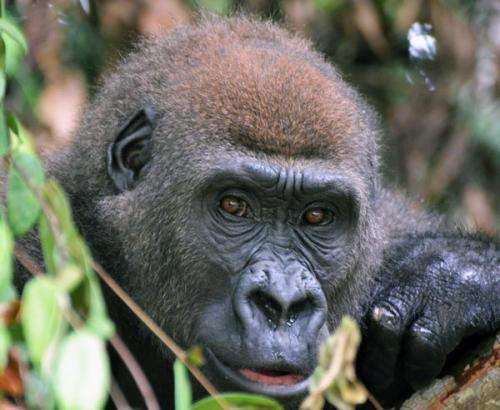Malaria: A vector infecting both apes and humans

In 2010, a study revealed that the main agent of malaria in humans, called Plasmodium falciparum, arose from the gorilla. Today, the vector which transmitted the parasite from apes to humans has just been identified. A Franco-Gabonese research consortium has determined which species of anopheles mosquitoes transfer the disease to apes. Among them is Anopheles moucheti, known for biting humans! Therefore, it must be the species which originally infected us through our cousins. And it could do it again today.
The same vector
IRD and CNRS researchers, in addition to their Gabonese partners based in the CIRMF in Franceville, wanted to determine the identity of the mosquitoes which transmit malaria to apes. To this end, they caught a thousand mosquitoes of the Anopheles genus, in close proximity to groups of wild or semi-wild primates. They then conducted analyses on the insects collected, belonging to fifteen different species, in order to detect which ones were infected by the Plasmodium malaria parasites. Two species of mosquitoes were thus revealed to be contaminated by these pathogenic agents. Anopheles moucheti was one of them – a major vector for humans in Central Africa. This species is therefore both primatophilic and anthropophilic. Since gorillas are the origin of the disease in humans, this species would have enabled the transmission of the infection from apes to humans thousands of years ago.
A relatively unknown disease
Despite its major impact on public health, particularly in sub-Saharan Africa, there are still several grey areas regarding the parasite and its vector. In particular, how the disease is transmitted to great apes was a controversial question until now. By analogy with the transmission methods observed in humans, scientists guessed that the mosquitoes concerned belonged to the Anopheles genus. However, they still needed to identify the species responsible for contamination among great apes, or those species that transferred the infectious agents from gorillas to humans in the past.
The same parasites
Not long ago, the evolutionary history of pathogens was also unknown. Over the last 5 years, several species of Plasmodium were discovered in our close cousins, gorillas and chimpanzees. Researchers believed that some of them were specific to humans. In gorillas, they recently described P. praefalciparum, which is the closest genetic relative of P. falciparum, the most virulent infectious agent.
Anopheles moucheti could continue to transfer parasites from one mammal to another even today. As such, apes could be a reservoir for humans. The increasingly close interaction between humans and apes, due to deforestation and hunting activities, once again raises the question of the possible eradication of the disease. Conversely, the already documented transfer of the disease from humans to apes could also occur, thereby threatening populations that are already highly endangered.
More information: Paupy, C. et al. Anopheles moucheti and Anopheles vinckei are candidate vectors of ape Plasmodium parasites, including Plasmodium praefalciparum in Gabon. PLoS One, 2013, 8(2):e57294. doi:10.1371/journal.pone.0057294.
Franck, P. et al. African great apes are natural hosts of multiple related malaria species, including Plasmodium falciparum. PNAS, 2010, 107 (4), p. 1458-1463. ISSN 0027-8424 fdi:010049221
Journal information: PLoS ONE , Proceedings of the National Academy of Sciences
Provided by Institute de Recherche pour le Developpement


















